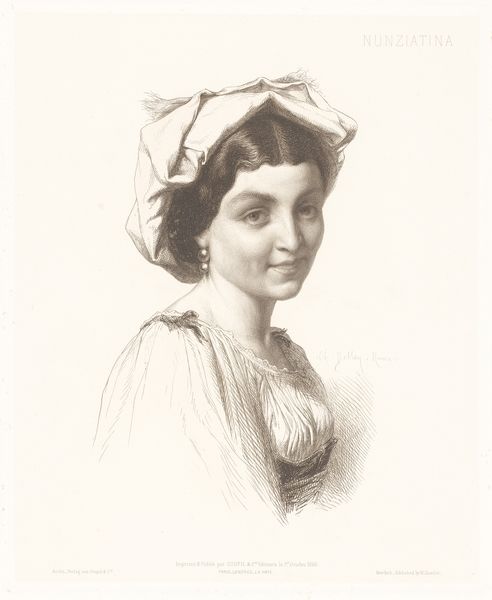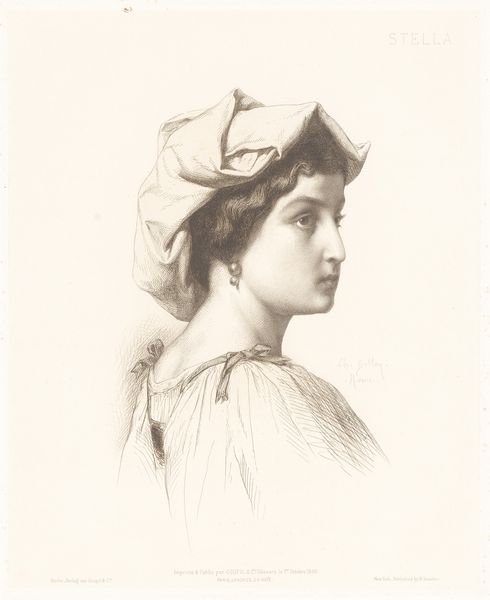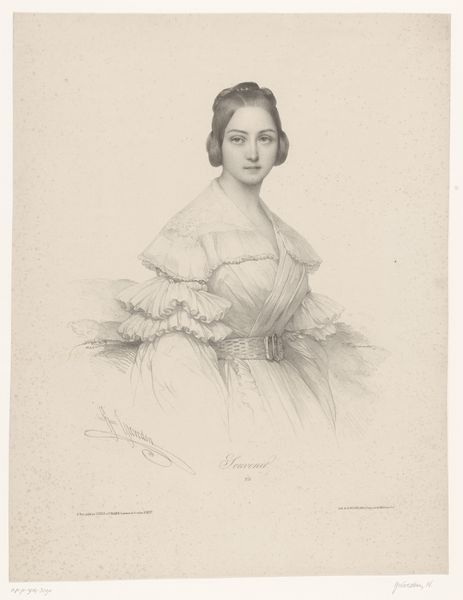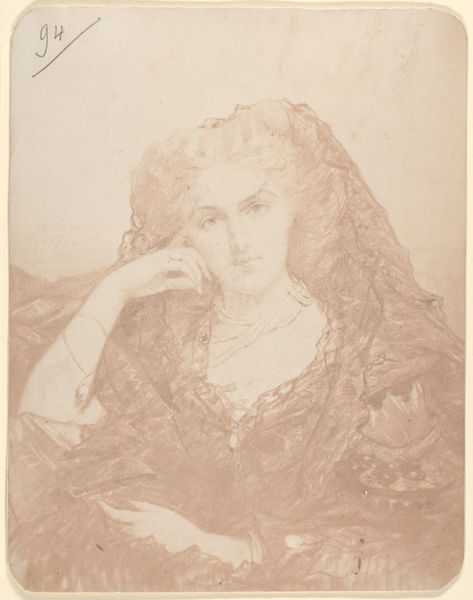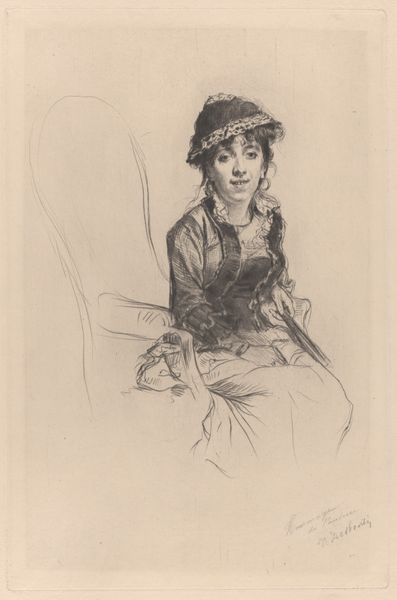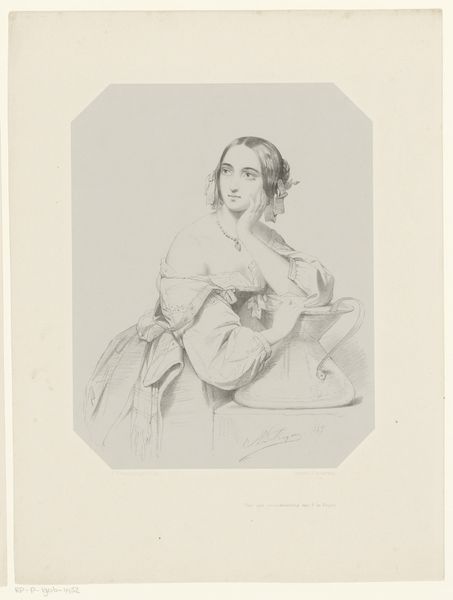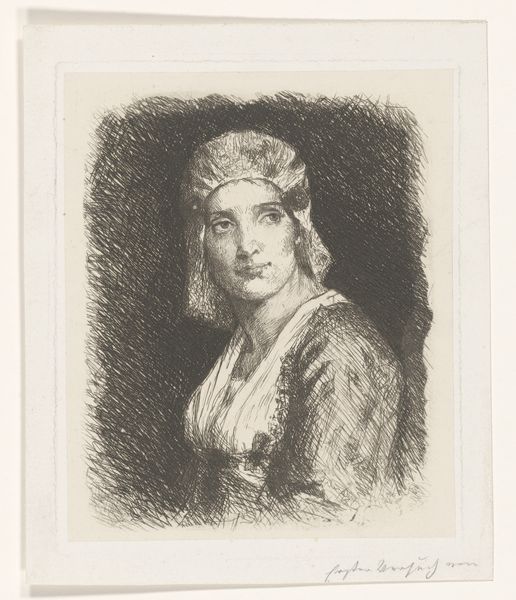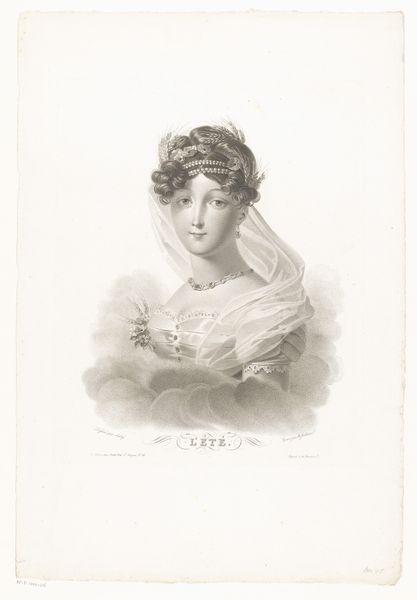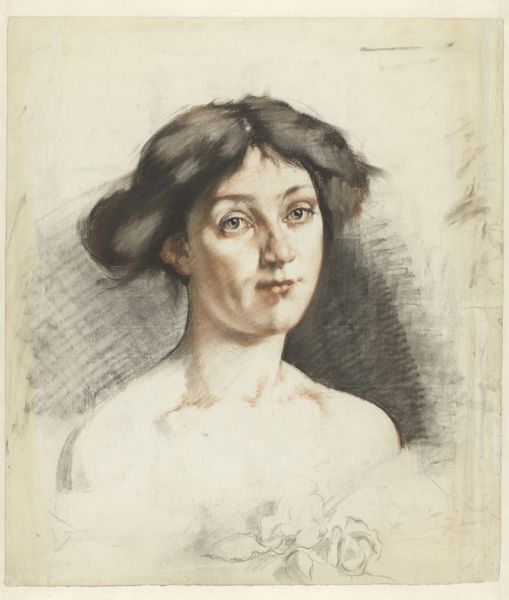
Dimensions: height 388 mm, width 298 mm
Copyright: Rijks Museum: Open Domain
Editor: This is "Portrait of an Italian Woman" by Charles Alphonse Paul Bellay, probably created between 1864 and 1868, using ink on paper. There's a real softness to the image. I am struck by the delicacy and elegance the artist was able to capture in this medium. How do you interpret this work? Curator: What I see primarily is the formal arrangement. Consider the strategic deployment of line and the artist's understanding of tonal variation to bring forth three-dimensionality from a two-dimensional surface. Notice how the ink strokes are meticulously built up to define the soft drape of the woman’s headdress and the delicate curls framing her face, in stark contrast with other more broadly hatched sections? What does this conscious juxtaposition imply? Editor: It’s almost like he wanted to direct the eye to her face by using these different textures to build depth. What is achieved with that, though? Curator: Indeed! Through formal construction, Bellay guides us to prioritize specific aspects within the artwork. Look how this contrasts with the less detailed, more suggestive rendering of the figure’s torso and clothing. The contrast serves to emphasize not just her presence but her idealized essence. Note, too, how the almost mathematical progression of chiaroscuro brings a powerful structure of order to the seemingly romantic theme. Editor: So you’re saying by concentrating on the artistry behind it all—how the picture is created through formal properties such as depth—rather than what's being depicted in the image, we discover what its true impact is. Curator: Precisely. That careful composition and deliberate artistic intervention is at the heart of its aesthetic power. We have considered the inherent components, to unveil its silent, structured narrative. Editor: I can see that now. I really learned a lot! It's not enough to just admire; we need to see how it works! Curator: Indeed. Understanding art lies in appreciating its architectural integrity.
Comments
No comments
Be the first to comment and join the conversation on the ultimate creative platform.
